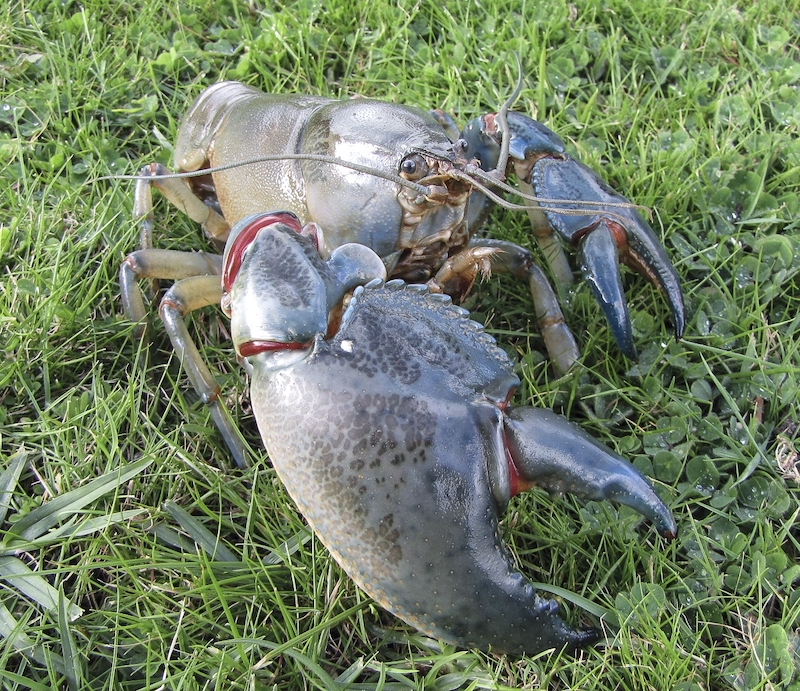A new species of freshwater crayfish in the southern hemisphere has been officially described for the Murray Darling Basin. Known as the Swamp Yabby it is only the third species of Yabby found naturally occurring in the entire MDB.
The formal identification is a pains-taking process and involves the collection of many specimens, from many locations and detailing every anatomical feature. In the Swamp Yabbies case this process had begun decades ago. I can remember a specimen being collected from near Swanpool nearly 30 years ago which was part of the collection. The Bpangerang undoubtedly knew of this type of yabby as it likely formed an important part of their natural larder.
For those wanting further detailed information the Scientific Paper titled Cherax latimanus sp. nov., a new burrow-dwelling freshwater crayfish from the mid-Murray River catchment, Australia by McCormick and Raadik was published in ZOOTAXA in late August 2021.
The Swamp Yabby is found locally, including on the Wangaratta Common, and differs from the Common Yabby, which occurs within the same geographical areas, in both physical and habitat preference ways. In fact, local fishing identity and nature lover Robbie Alexander was one of the many who assisted the researchers by providing specimens from Wangaratta and surrounding areas.
The distinctive wide claw of this yabby is an obvious characteristic which separates it from the much narrower clawed Common Yabby. This gives rise to other names for the Swamp Yabby including Banjo Claw Yabby, Broad Claw Yabby, Mud Burrow Yabby, Spanner Claw Cray or Swampies.
Other key characteristics of the Swamp Yabby include a rounded carapace (largest body section) and a snout or beak-like structure above its eyes that is broad and flat rather than flat.
Its distribution and habitats are currently known from a large area in the mid-Murray River catchment, bounded by Deniliquin–Echuca–Nagambie–Taggerty–Eildon–Merrijig–Chiltern–Whitfield. Populations have been found along the Murray River from Lake Moira upstream to near Wodonga, including along the major tributary catchments like the Ovens, Broken and Goulburn rivers.
The species is restricted to flood plain reaches of rivers and creeks for up to 20 km each side of the major rivers, the edges of shallow lakes, temporary swamps and wetlands and shallow roadside drains. It has been recorded from lowland to foothill reaches, at elevations from 100–420 m above sea level.
The Swamp Yabby is further identified by its distinctive biology: it is not found in permanent aquatic habitats such as streams or billabongs, spending the majority of its time in extensive, terrestrial, burrow networks containing some water, in periodically wet habitats such as drainage lines, roadside drains, depressions, swamps and cleared areas of pasture in lowland to foothill areas. It is occasionally found in stream habitats but only during large flood events when burrow systems are inundated. The burrow networks tend to cause significant mud holes and towers and are very difficult to walk across when dry. These areas are sometimes described as crab-hole country. An excellent example of these major colonies can be found in some of the wetter parts of Wangaratta Common. And yes, like their common relative they can be very good eating!
Ian Davidson

